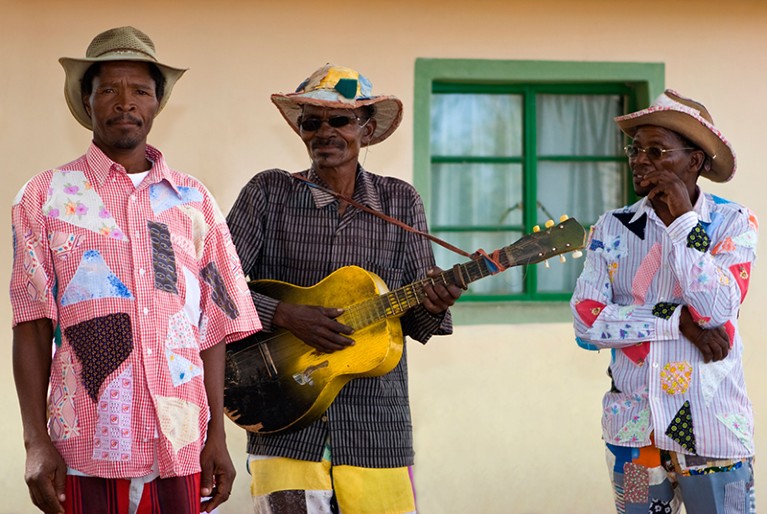
The widely held idea that modern-day humans originated from a single region of Africa is being challenged by modelling that has analysed a vast amount genomic data. The models suggest that humans arose from multiple ancestral populations around the continent. These ancient populations — which lived more than one million years ago — would have all been the same hominin species but genetically slightly different.
The models supporting this theory rely on new software and genomic sequencing data from current African and European populations, as well as Neanderthal DNA. Researchers published the results on 17 May in Nature1.
The study contributes more evidence to the idea that there is “no single birthplace in Africa, and that human evolution is a process with very deep African roots,” says Eleanor Scerri, an evolutionary archaeologist at the Max Planck Institute of Geoanthropology in Jena, Germany.
The single-origin theory has been popular for decades, and is based in part on fossil records. But the theory doesn’t fit the data well, says Scerri. The tools and physical traits attributed to Homo sapiens all crop up throughout Africa around a similar time. If humans had radiated from a single location, archaeologists would expect to see more recent fossils farther away from a central point, and older ones closer to it.
Ancestral stem
The ancient hominin species, or ‘ancestral stem’, had localized populations who apparently interbred over millennia, sharing any genetic differences that had evolved. They also moved around Africa over time. “Our roots lie in a very diverse overall population made up of fragmented local populations,” says Scerri. The intertwining of these stems, only weakly separated by genetics, gave rise to a concept of human evolution the researchers described as a “weakly structured stem” — more like a tangled vine than a ‘tree of life’.
While the idea of multiple origin points isn’t new, the ‘weakly structured stem’ explanation is. Other models exploring multiple origins points have not used as many parameters as this study, says Brenna Henn, a study co-author and human geneticist at the University of California, Davis.
The team used software developed by co-author Simon Gravel from McGill University in Montreal, Canada, that can handle the extensive computing power needed for more expanded modelling. Past work also fell short on genetic data, focusing mainly on West Africa, meaning that the continent’s vast genetic diversity wasn’t incorporated. That created an incomplete picture of how modern humans’ ancestors might have mingled and moved across the landscape, and required scientists to make more assumptions to fill knowledge gaps.
Genomic data
The latest study incorporated genome sequencing from existing east and west African populations and the Nama people of southern Africa. This spread of genomic data helped the researchers to understand and track historic movement of genes across generations.
“We really wanted to sit down and very systematically evaluate the models in a more creative way,” says Henn. “It’s a new model for human evolution that is concrete.”
The models use variables such as migration and populations merging to predict gene flow over the course of thousands of years. Those predictions are compared to the genetic variation seen today to determine which models match the data best.
One previously proposed explanation for today’s human diversity is that H. sapiens mixed with other archaic human species that had branched off and become isolated. But Henn and colleagues found that the weakly structured stem model was the better fit, more clearly explaining the variation seen in humans today.
Ultimately, questions still abound surrounding humans’ origins. Henn wants to add more DNA from other African regions to the models to see if the data changes their results. She also hopes to use the data to make predictions about fossil record, for example predicting what features would be found in human fossils from a particular area.
Science - Latest - Google News
May 18, 2023 at 01:37PM
https://ift.tt/K57kysO
Human-evolution story rewritten by new data and computing power - Nature.com
Science - Latest - Google News
https://ift.tt/j2xSbZz
https://ift.tt/TzRrPvM
Bagikan Berita Ini

















0 Response to "Human-evolution story rewritten by new data and computing power - Nature.com"
Post a Comment